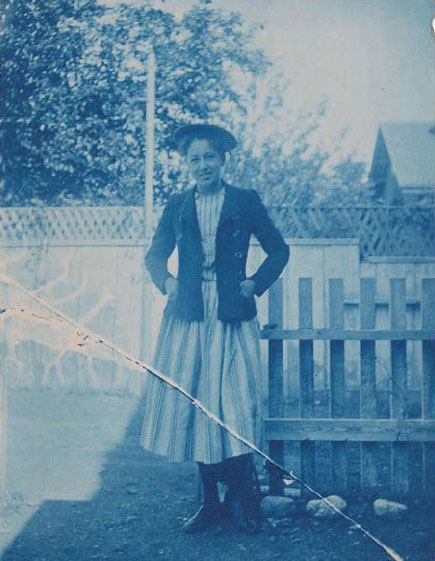- Relief printing
- Intaglio and planographic printing
- Color printing
- Bits and pieces
- Early photography in silver
- Non-silver processes
- Modern photography
- Color notes
- Color photography
- Photography in ink: relief and intaglio printing
- Photography in ink: planographic printing
- Digital processes
- Where do we go from here?
Non-Silver Processes

Blueprint. Photographer unknown. Elizabeth Perry Howard. c. 1890. 4 1/2 x 3 7/16" (11.4 x 8.7 cm). The Museum of Modern Art, New York. Gift of Richard Benson. Printed from a cracked glass dry-plate.
In the nineteenth century a great many odd and obscure printing processes were developed that did not involve silver, the most significant of them using either colloids (such as gelatin) that could be hardened or iron compounds that would change upon exposure to intense light. There is a large difference in the light energy needed to make a negative and to make a print. The negative is usually made in a camera, whose lens focuses the light that goes through it so that any point on the negative only receives light from a single point on the subject.

